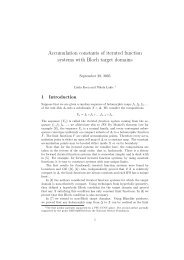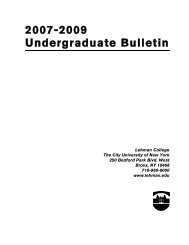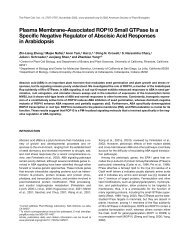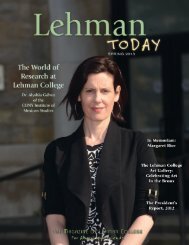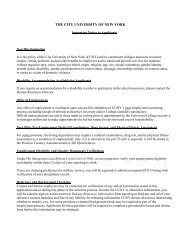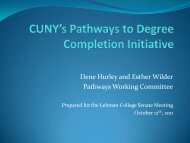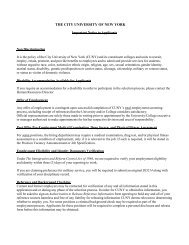Create successful ePaper yourself
Turn your PDF publications into a flip-book with our unique Google optimized e-Paper software.
Lost Boys of the Bronx: The Oral<br />
History of the Ducky Boys Gang<br />
(Authorhouse, 2010). James Hannon.<br />
You could say that James Hannon (B.S., ’89)<br />
was born to write a history of the Ducky Boys,<br />
the much-mythologized Bronx street gang from<br />
the early 1960s. For starters he lived in the<br />
heart of “Ducky” country, having grown up in the<br />
Norwood section of the Bronx (then known, he<br />
points out, as Bainbridge). In fact, he actually<br />
grew up on the same block—Briggs Avenue<br />
and East 196th Street—as Kevin Byrne, who<br />
was not only a Ducky Boy member but also the<br />
younger brother of the twins, Jimmy and Frankie Byrne,<br />
who founded the gang.<br />
Hannon doesn’t glamorize—or condemn—the Ducky<br />
Boys. Instead, he shines a light on a gang whose<br />
notoriety has only grown since novelist Richard Price<br />
fictionalized the group in his 1974 debut novel The Wanderers.<br />
In Price’s Bronx milieu, the Ducky Boys were a gang comprised<br />
of “hundreds of stunted Irish madmen with crucifixes tattooed<br />
on their arms and chests, lunatics with that terrifying, slightly<br />
cross-eyed stare of the one-dimensional, semihuman, urban<br />
punk killing machine.”<br />
In the film version of The Wanderers, which has since gone on to<br />
achieve cult status, the Ducky Boys were a group of mute misfits<br />
who, in the film’s climatic fight scene, decide to ambush a football<br />
game between rival gangs, only to get beaten and run for their<br />
lives. If there’s one thing in the film that all the gangs can agree on,<br />
it’s that everyone fears—and no one likes—the Ducky Boys. Inspired<br />
by Hollywood’s depiction of his Bronx neighborhood, Hannon set<br />
out to tell the true story of that long-ago era of his native borough.<br />
In reality, the Ducky Boys were a lot less dangerous than their cinematic<br />
counterparts, and it’s this discrepancy between the gang’s<br />
popular perception and reality that Hannon attempts to set straight.<br />
For one, they weren’t all short; and two, they weren’t all Irish. There<br />
were hundreds of them, however, and the group was much feared,<br />
and with good reason: in the early ‘60s, a chance encounter with a<br />
Ducky on Webster Avenue could end in bloodshed—probably yours.<br />
Truth be told, the Duckys were, like plenty of other teenagers in<br />
the Bronx and elsewhere, just directionless inner-city kids with<br />
excessive amounts of adolescent adrenaline to burn wandering the<br />
streets. Not particularly dressed up and definitely nowhere to go.<br />
Perhaps the most famous Ducky of them all was a Bronx street kid<br />
who grew up to become Ace Frehley, an original member of the<br />
rock band KISS; however, as Hannon points out, Frehley wasn’t<br />
really “in” the gang, but hung out on its margins.<br />
Hannon calls the Duckys the “Lost Boys” because, as he puts it,<br />
many of them “didn’t make it to adulthood” (of the literally hundreds<br />
of kids who were in the Duckys, less than 25 percent are alive<br />
today). Aside from the fights, rumbles, and pranks—perhaps their<br />
favorite pastime—many members eventually fell victim to drugs<br />
(sniffing glue seems to have been the narcotic of choice), while<br />
some who did grow up got involved in more serious drugs and<br />
crimes. A fair number of the Ducky Boys were sent to Vietnam. The<br />
Lost Boys of the Bronx should probably best be seen as a cautionary<br />
tale of what happens to kids who don’t want to grow up. <br />
When she returned to the U. S. two years later, she moved to<br />
Hawaii and began writing about what she had learned, publishing<br />
her work in magazines, newspapers, and encyclopedias, as well as<br />
in a book, Discovering the Body’s Wisdom (Bantam Books, 1996),<br />
a guide to Eastern and Western body-mind disciplines. During her<br />
travels in Asia, she had learned about non-Western spiritual traditions<br />
and attended a ten-day Buddhist meditation retreat. Although<br />
she did not realize it at the time, those experiences eventually led<br />
her back to graduate school, this time to earn a doctorate in Asian<br />
and Comparative Studies.<br />
The idea for her most recent book, Living This Life Fully: Stories<br />
and Teachings of Munindra, developed in 2004 while she was on<br />
a month-long retreat at the Forest Refuge in Barre, Mass. As she<br />
explains, Anagarika Munindra was a grandfather of the “mindfulness”<br />
movement in the West and taught others who went on to<br />
teach and apply mindfulness in education, health care, law, sports,<br />
and psychology. Though Munindra’s name may not be familiar, his<br />
students include best-selling authors like Daniel Goleman, former<br />
New York Times journalist reporting on the brain and behavioral<br />
sciences and author of Emotional Intelligence.<br />
Collaborating with Robert Pryor of the Antioch Education Abroad<br />
Program in Buddhist Studies in India, Dr. Knaster set about her<br />
research and interviewed nearly 200 people around the world of<br />
different religious backgrounds who had known Munindra. “Their<br />
stories,” she says, “convey what it’s like to embody the sixteen qualities<br />
that make a great human being, no matter what religious path<br />
you’re on. They’re qualities that anyone can practice in daily life.”<br />
This latest book brings together the various strands of Dr. Knaster’s<br />
original fascination with cultural anthropology. “I realize I’ve<br />
become a kind of translator after all,” she says, “not of language<br />
in the literal sense, but of different healing systems, cultures, and<br />
spiritual traditions.”<br />
Dr. Knaster and her husband, Larry Jacobs, live by the ocean in<br />
northern California. Learn more at www.mirkaknaster.com <br />
<strong>Lehman</strong> Today/<strong>Spring</strong> <strong>2011</strong> 7



